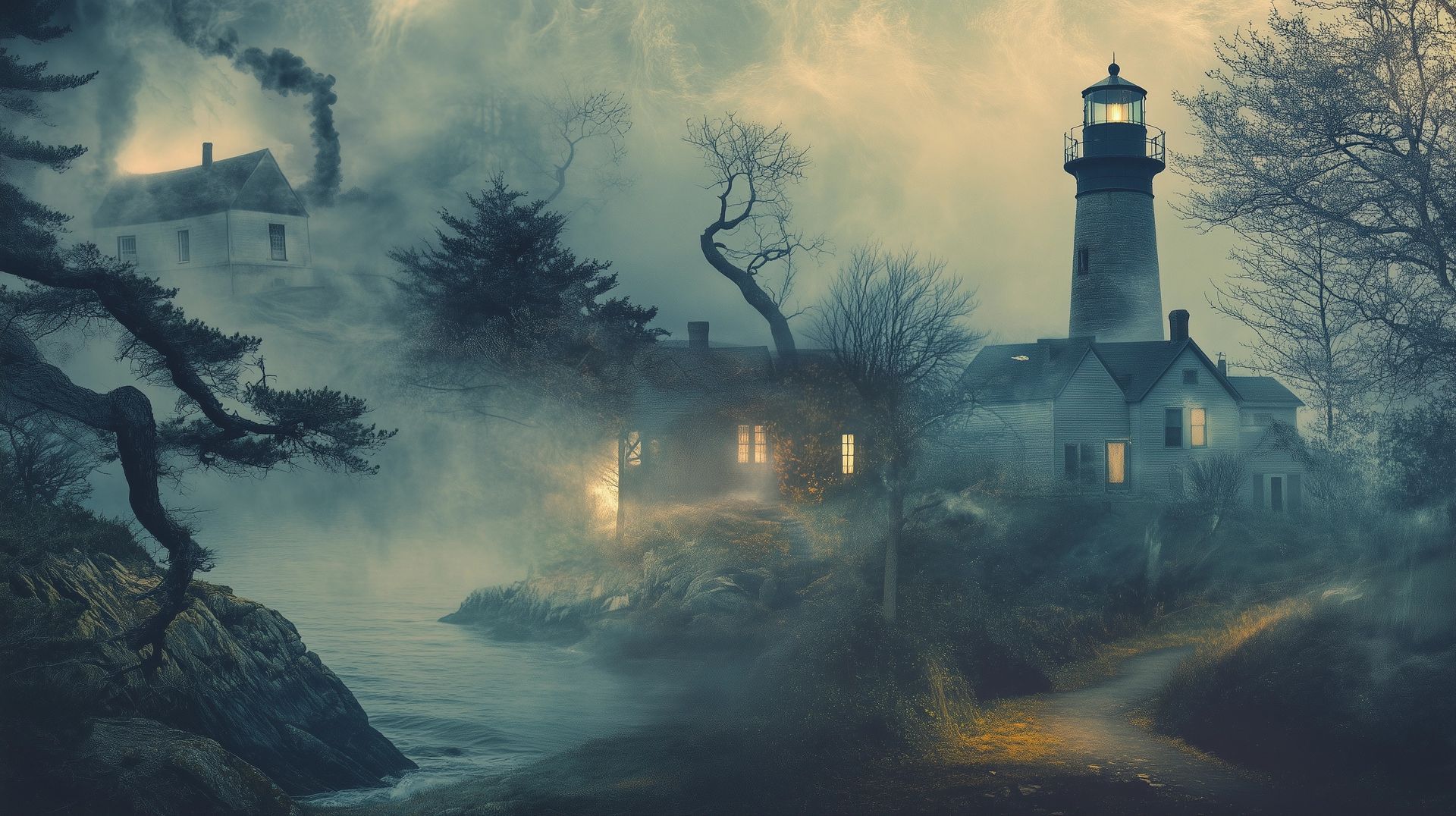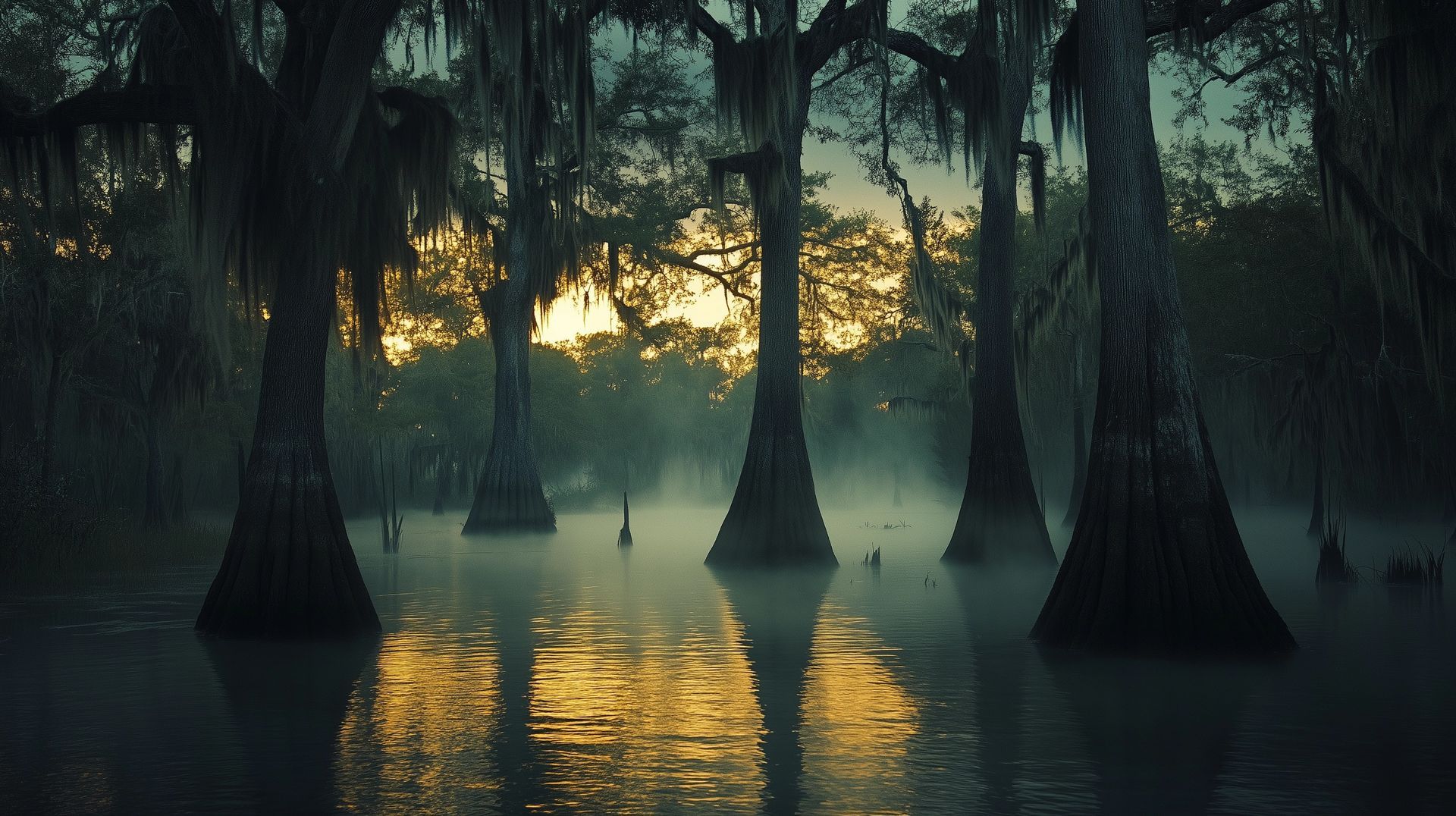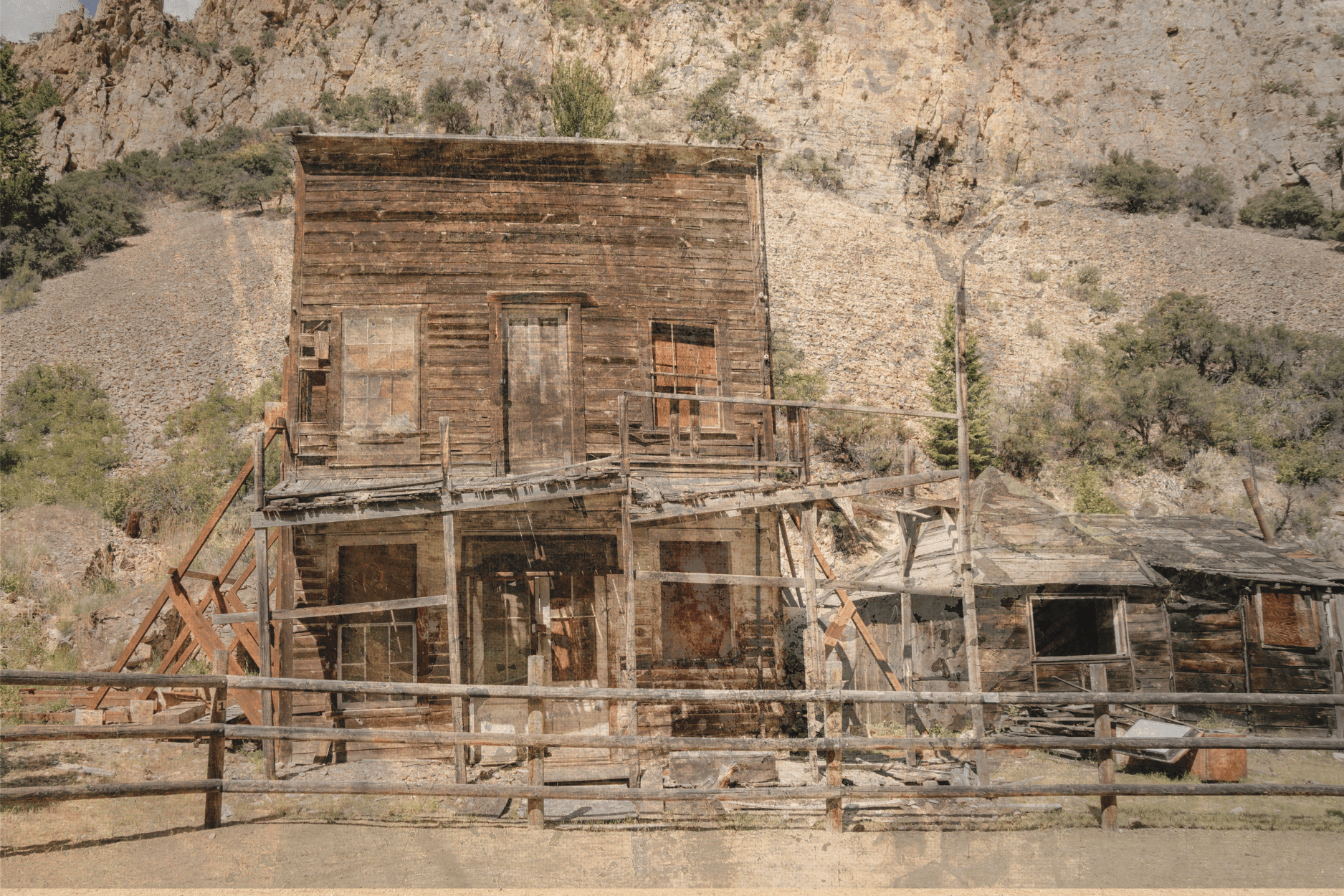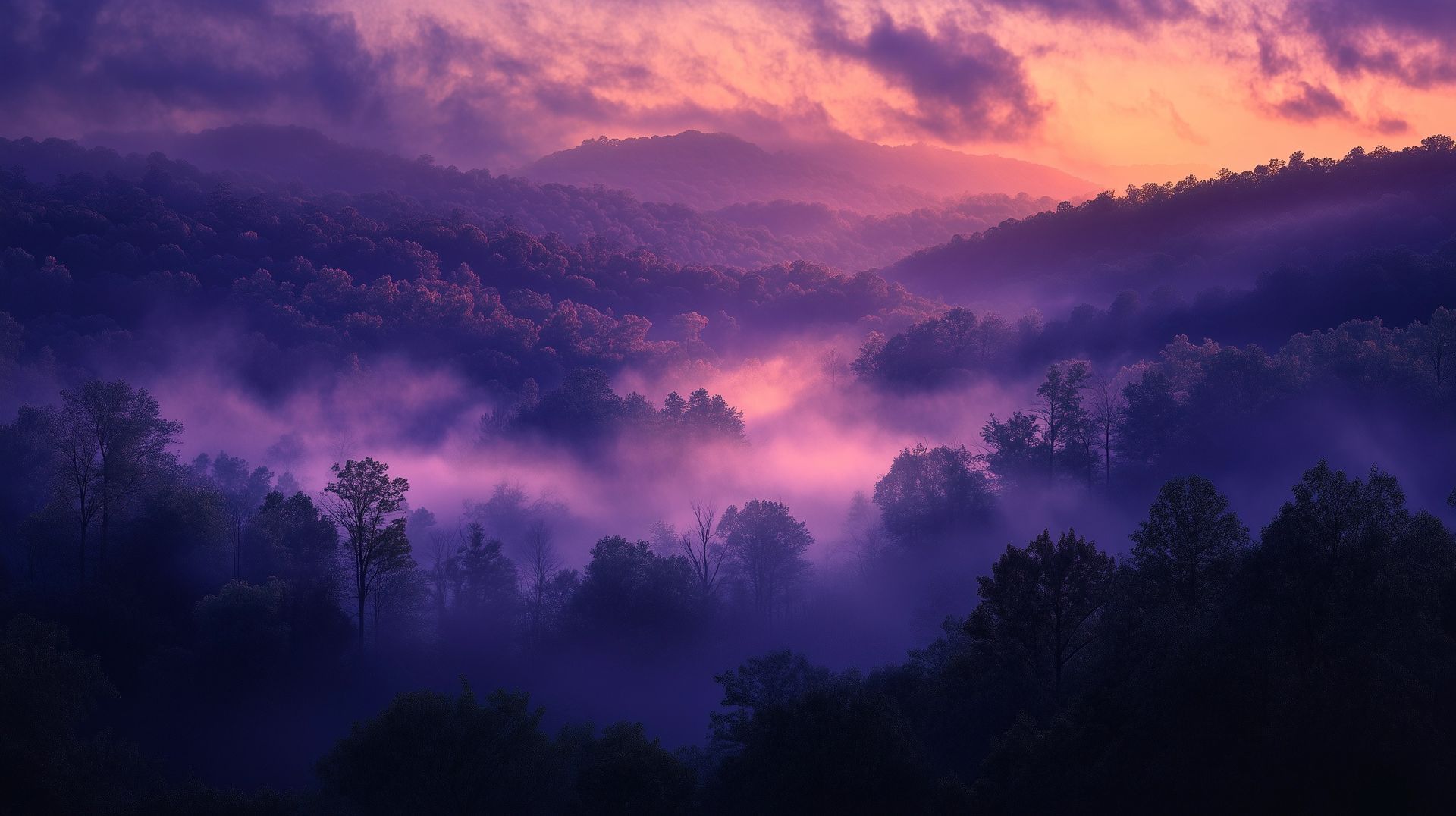The origins and folktales of Paul Bunyan: a giant of American folklore
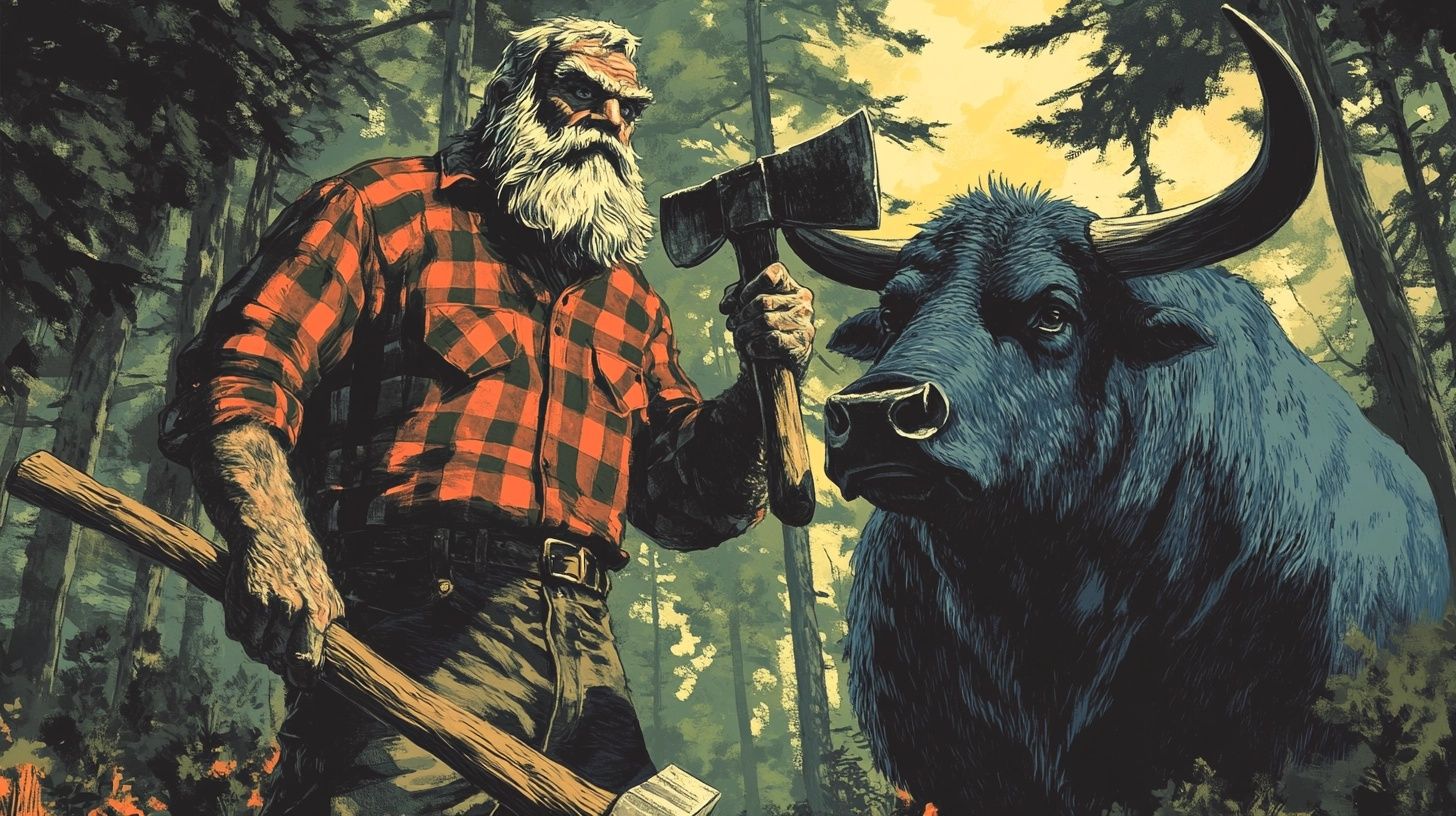
Paul Bunyan, the mythical giant lumberjack, remains one of America's most enduring and loveable folk heroes.
Known for his larger-than-life adventures, the tall tales of his grossly exaggerated feats have been entertaining audiences in logging camps - and beyond - across the United States for over a 100 years.
But have you heard the one about the bean soup lake? Or the cook that had a face so sour he was able to ferment alcohol? No?
Then come with me as i do a round up on the origins and some of the best stories of this iconic North American character.
Published: 2nd Nov 2024
Author: Mythfolks
1. Who was Paul Bunyan?
Paul Bunyan was no ordinary logger (and also not a real person - though perhaps originally inspired by one. Maybe). But according to his legend, he stood seven feet tall with a stride to match.
His booming voice could call his entire crew to dinner by blowing through a hollow tree, shaking branches as if they were mere twigs.
In the days when men worked from dawn to dusk cutting down trees, stories like Bunyan’s helped them find friendship and laughter amid the ongoing slog of logging life.
2. Origins of the legend
The legend of Paul Bunyan began in the lumber camps of North America in the 19th century - the camps were isolated and naturally the loggers found entertainment in storytelling.
As always happens with oral traditions, each time the stories were told, the teller would add their own exaggerations and soon Paul Bunyan became a giant who could clear a forest with a single hand.
The earliest tales likely originated in the Northeastern United States, with Wisconsin recognized as playing a key early role in recording them, but they spread rapidly from east to west and even north of the border, with Canada developing its own Paul Bunyan stories.
Paul Bunyan's tales were originally made popular in part through advertising by lumber companies in the early 20th century (shocker!).
They saw his legend as an opportunity to promote the industry and the character's popularity surged after appearing in promotional pamphlets, turning a logging camp legend into a national folk hero.
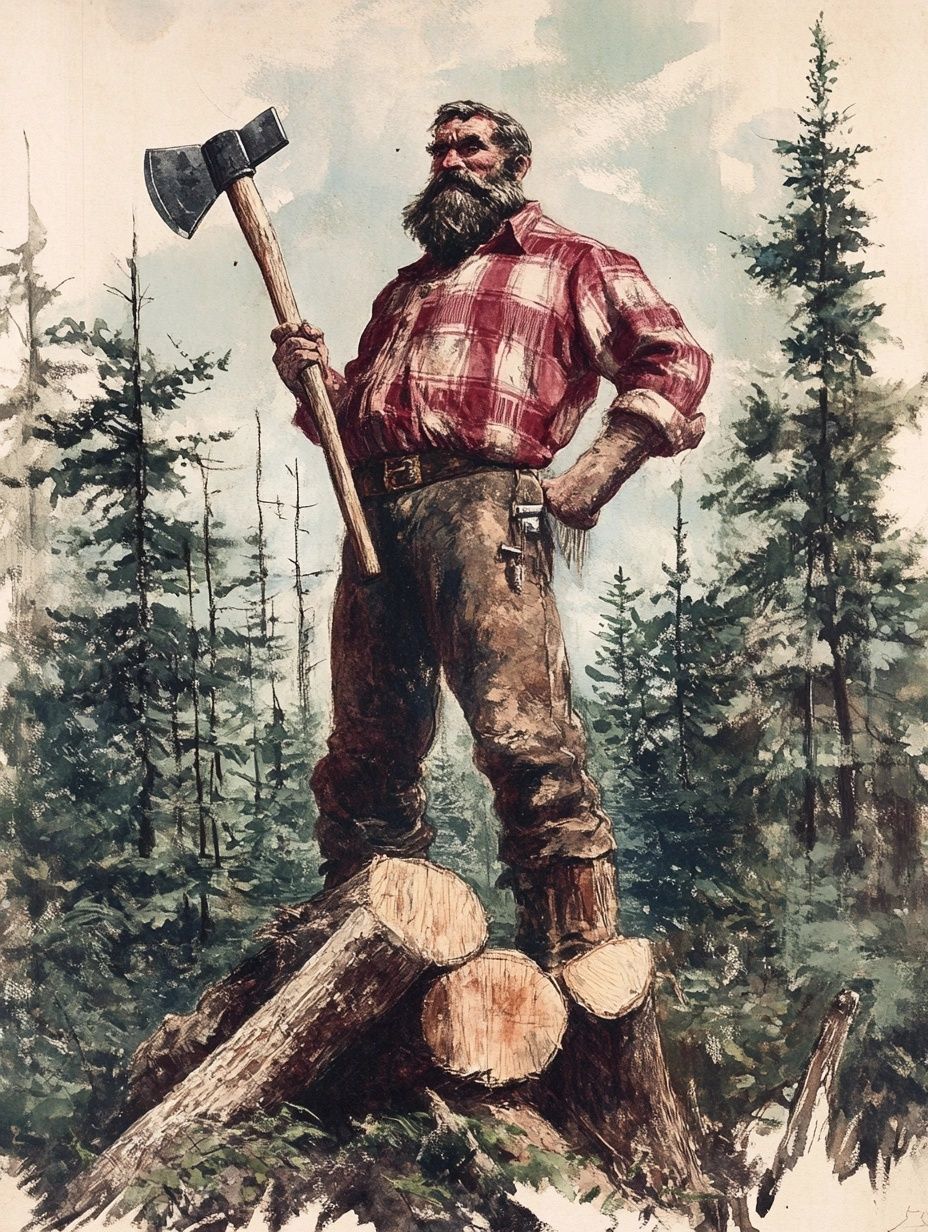
3. Tall tales of Paul Bunyan
The tall tales of Paul Bunyan are of course what we all love - grand stories of his exploits, his loyal companion Babe and the larger-than-life adventures of his ragtag logging crew.
Let’s kick off with one of the most iconic stories.
Babe, the Blue Ox
No roundup of Paul Bunyan would be complete without Babe, the Blue Ox - Bunyan’s large and loyal companion and partner in many of his adventures.
Babe was said to weigh ten thousand pounds and measured "seven axe handles" between the eyes - apparently, some of the lakes in Wisconsin and Minnesota are in holes made by his feet!
How did he become blue? Well, one year, it snowed blue snow for seven days (who knows why, who cares!) and Babe laid out the whole time (silly boy) so he ended up turning from white to blue (in one source, this winter was also referred to as "the winter of the snow snakes" and i'm digging into more on that...).
Babe was as strong as he was large. Together with Paul, they pulled entire houses up hills - Paul would pull the logs and Babe would pull the cellar.
Babe’s strength was essential to many of Paul Bunyan's feats. Babe once helped Paul drag an enormous log so forcefully that it peeled the bark right off, leaving it "as clean as a whistle".
Babe's mischievous side also shines through in the stories. One recalled how he would sneak up behind the logging crew and drink a river dry, leaving them literally high and dry without water. What a rascal!
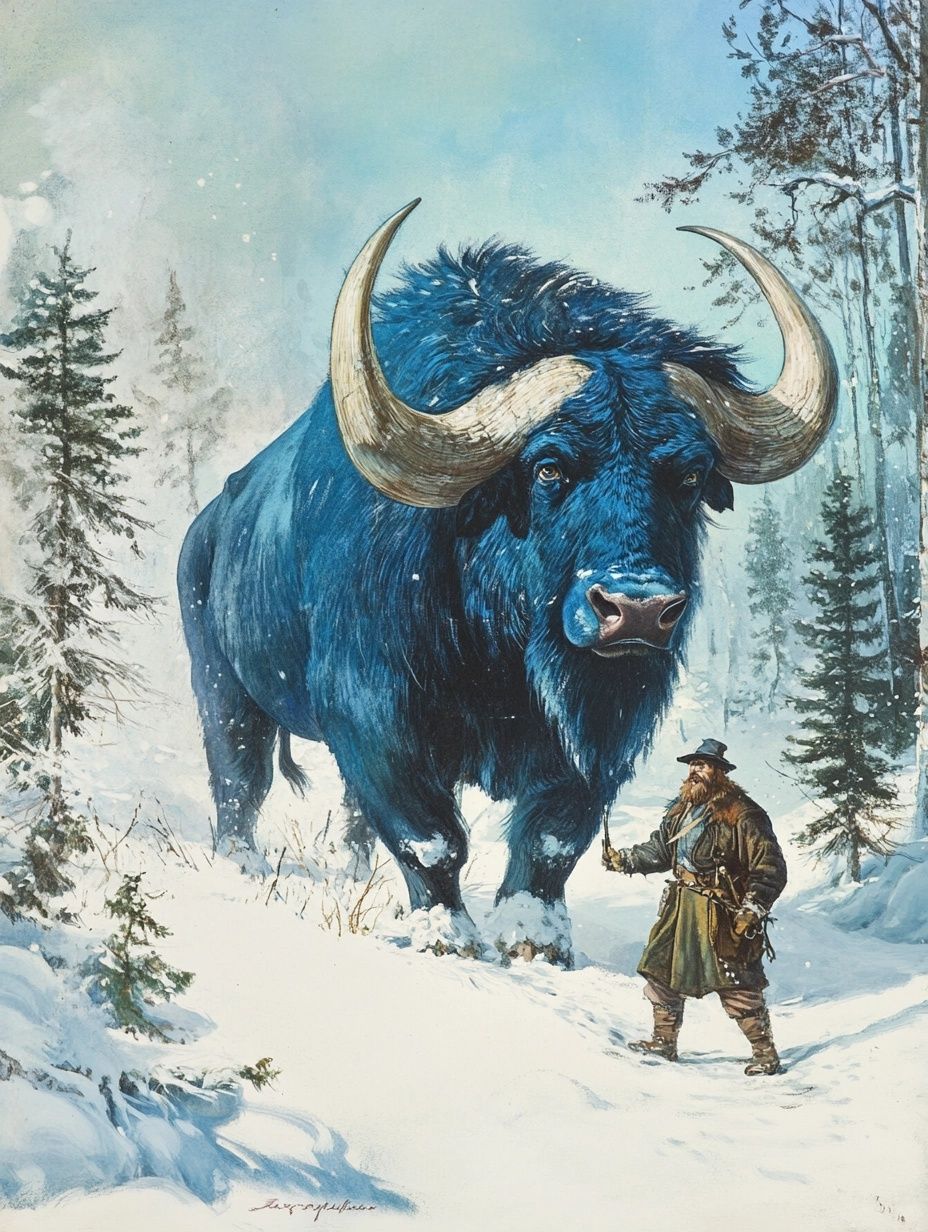
Scooping Out Lake Superior
One story claims that Paul Bunyan created Lake Superior by scooping out a huge hole to store water for his logging operations.
He needed a large supply of water to create ice for his logging roads, which helped move the logs more easily during the winter months.
Creation of the Mississippi River
Babe was back in action on this one, credited in one tale with the creation of the Mississippi River.
According to the legend, the river formed when Babe accidentally tipped over a massive water tank. Oops.
Logging North Dakota
Paul Bunyan was once credited with logging the entire state of North Dakota by himself which is another great example of the exaggeration found in tall tales (and that's why we enjoy them!).
The image of a single man logging an entire state is a classic element that plays on Paul’s apparently superhuman capabilities.
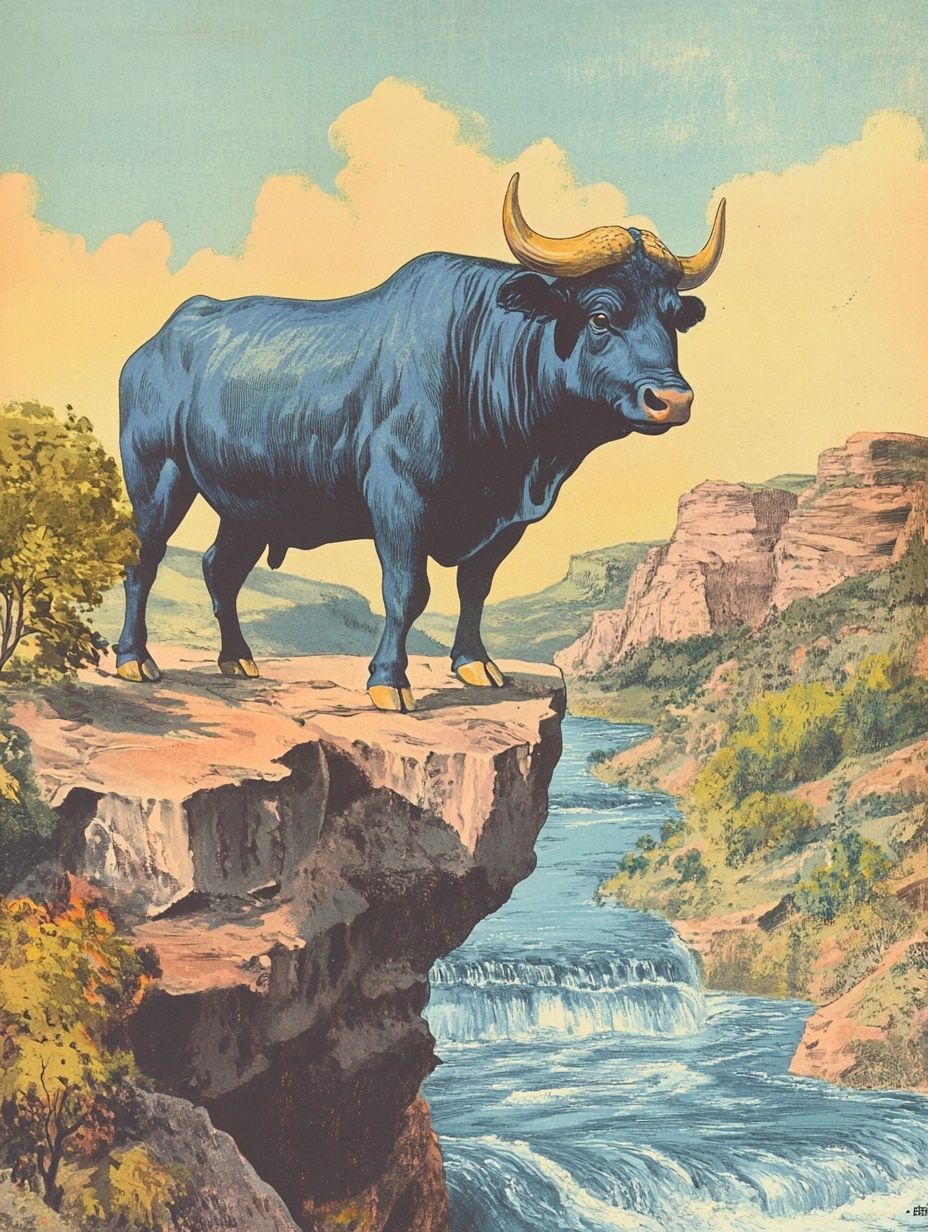
The Round River Drive
This is one for you if you've ever felt like you were just going round in circles - you're not the only one.
One time, Paul’s crew spent weeks driving logs down a river, only to realize it was actually circular. Eventually, after they kept passing their own camp repeatedly, they recognized the surroundings.
This particular story is a nod to the absurdity and persistence that characterized life in the logging industry.
The Pyramid Forty
Paul Bunyan’s camp once took on a forty-acre plot of land shaped like a pyramid, covered in a thick forest.
The crew worked the entire winter, “the winter of the blue snow,” (same one that got Babe) to clear it, and by spring, they had managed to cut one hundred million feet of timber!
But the slope was so steep that some men ended up with one short leg from working there all season...
Bunyan's Method of Paying Off His Crew
Paul Bunyan wasn't just clever in the woods - he was also crafty in handling his crew (or perhaps better interpreted as stingy and a warning about bad employers).
One season, when Paul had no money to pay them, he told his men they had mistakenly cut government-owned pine and were likely to be arrested.
In a panic, each crew member grabbed whatever property they could and fled, avoiding any confrontation and allowing Paul to disband the crew without payment. So yeah, what a guy...
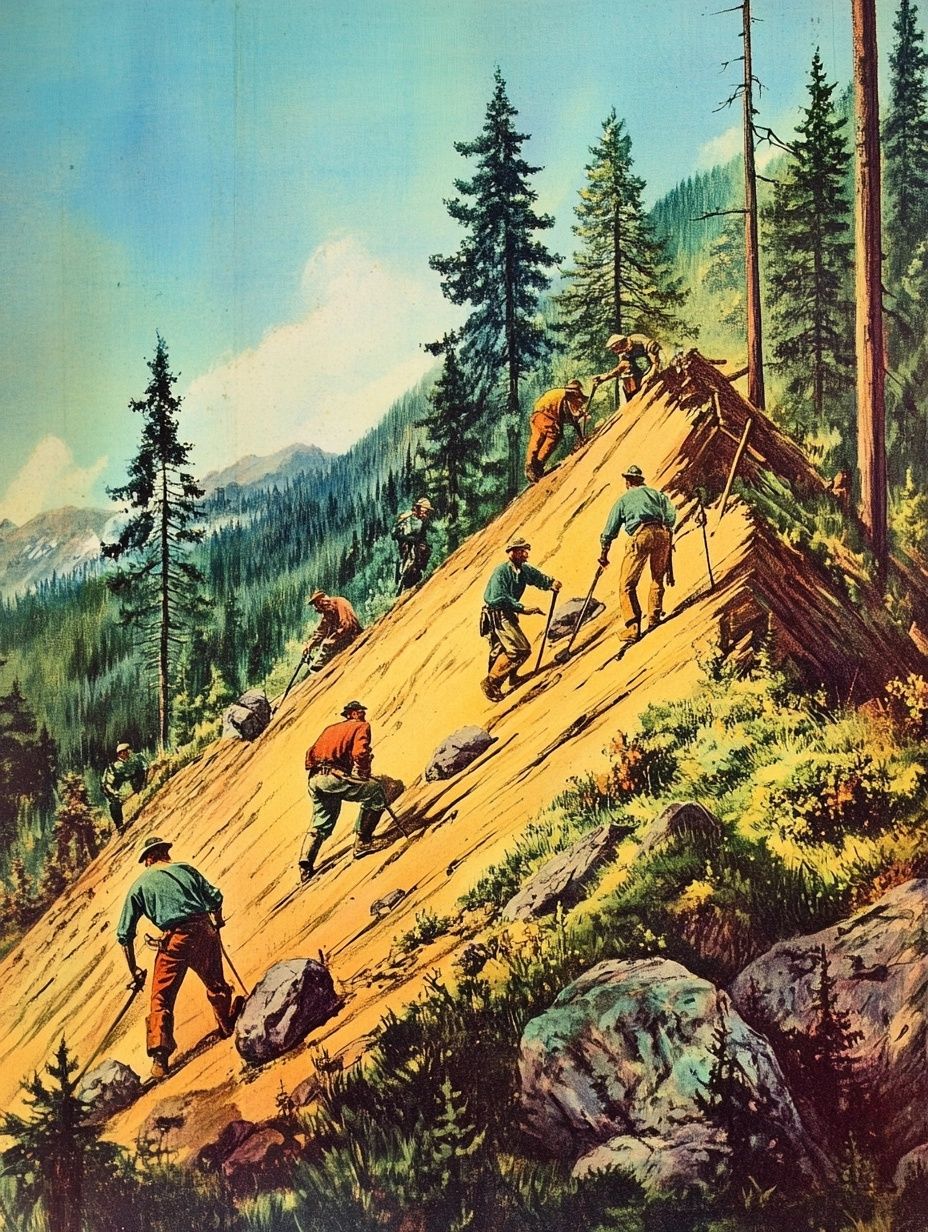
Bean Soup Lake and Pea Soup Lake
In one version of the tale, a group of lumberjacks spilled a load of beans into a hot spring, which became known as Bean Soup Lake.
The cook, Joe Mufferon, decided to add some salt, pepper and pork, and from then on, the camp had an endless supply of bean soup for the winter. The lucky assistants just had to tramp three miles each day to collect soup...
In an alternative version, Paul Bunyan created Pea Soup Lake by deliberately dumping peas into a lake and using branches and leftover wood from nearby trees to heat the water, creating a lovely, large lake of pea soup.
Peas and beans, logger's delight.
The Camp Distillery
Keeping liquor in camp was nearly impossible, as the crew would drink it all on the way back from town!
But when the bull-cook, Murphy, noticed that potato peelings had started to ferment, Paul turned the discovery into a camp distillery.
Murphy, who always had a sour expression, was tasked with the job of camp distiller because his "sour face" supposedly helped with the fermentation process.
Resourceful but unfortunate for poor Murphy.
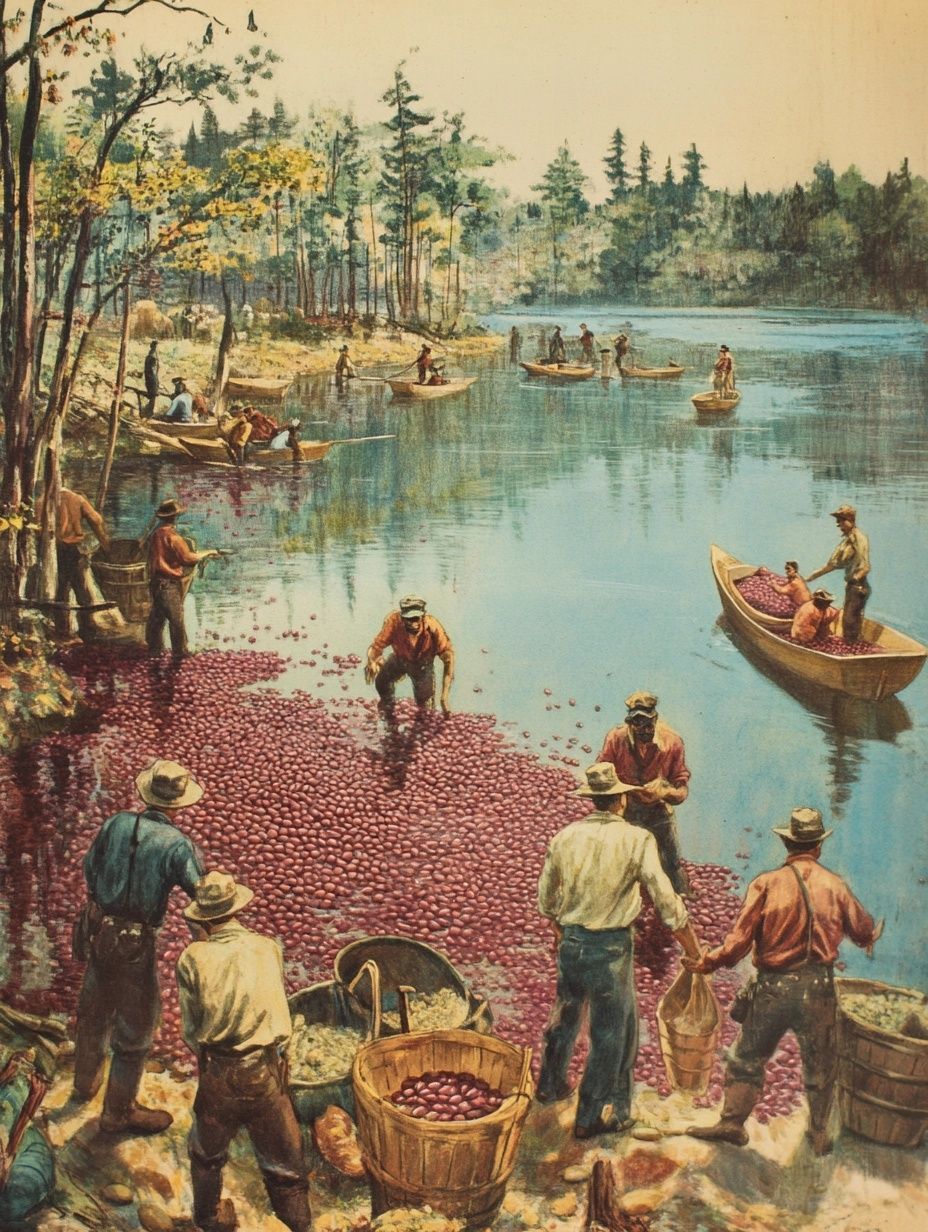
4. Other mythical creatures in Paul Bunyan's world
Paul Bunyan's world wasn't limited to human characters; besides Babe, it also featured a host of other creatures like:
- The Rumptifusel: a large, vicious creature covered in a soft fur similar to mink. It's flat, flexible and uses a deceptive method to catch prey - posing as an abandoned fur coat on a log. When an unsuspecting person tries to grab it, the Rumptifusel quickly jumps them, using tiny suction pores on its underside to drain its victim
- The Hodag: a Wisconsin cryptid (though some disagree with this status), said to resemble a hybrid dragon/lizard/ox, with sharp horns and spikes
- Upland Trout: these fish built their nests in tall trees, making them particularly challenging to catch
- Side-Hill Dodgers: with two short legs on one side, these creatures were perfectly adapted to walking along slopes without toppling over
- The Bird with Square Eggs: a peculiar bird near Paul’s camp laid square eggs to prevent them from rolling downhill.
- The Pinnacle Grouse: this one-winged bird flew in circles around a cone-shaped hill
What had once been some simple stories to tell around the campfire to keep up the spirits of hard-working men, had become an entirely mythical menagerie of beings as time went on!

5. Paul Bunyan's loyal crew and camp life
Paul Bunyan’s logging crew was filled with memorable characters, each with their own extraordinary skills.
Jim Liverpool was known for his incredible jumping abilities, while Dan McDonald’s dual set of teeth could chew through anything.
Other members like Curley Charley and Red Murphy added unique flair to the mythos.
Life in Bunyan’s camp was exaggerated to match the scale of Bunyan himself.
- The cook shanty was so vast it took half a day to walk around and the dining horn was so powerful that blowing it upward once caused a cyclone.
- Gigantic meals - bread loaves were so large that once the men had eaten the insides, the crusts became their beds.
- Joe Mufferon, the cook, would grease the stove by having assistants strap hams to their feet and skate across it.
- "The winter of the black snow" occurred when blasting powder accidentally got mixed into the pancake batter, causing an explosion that sent the cook's assistants flying through the roof (apparently unharmed).
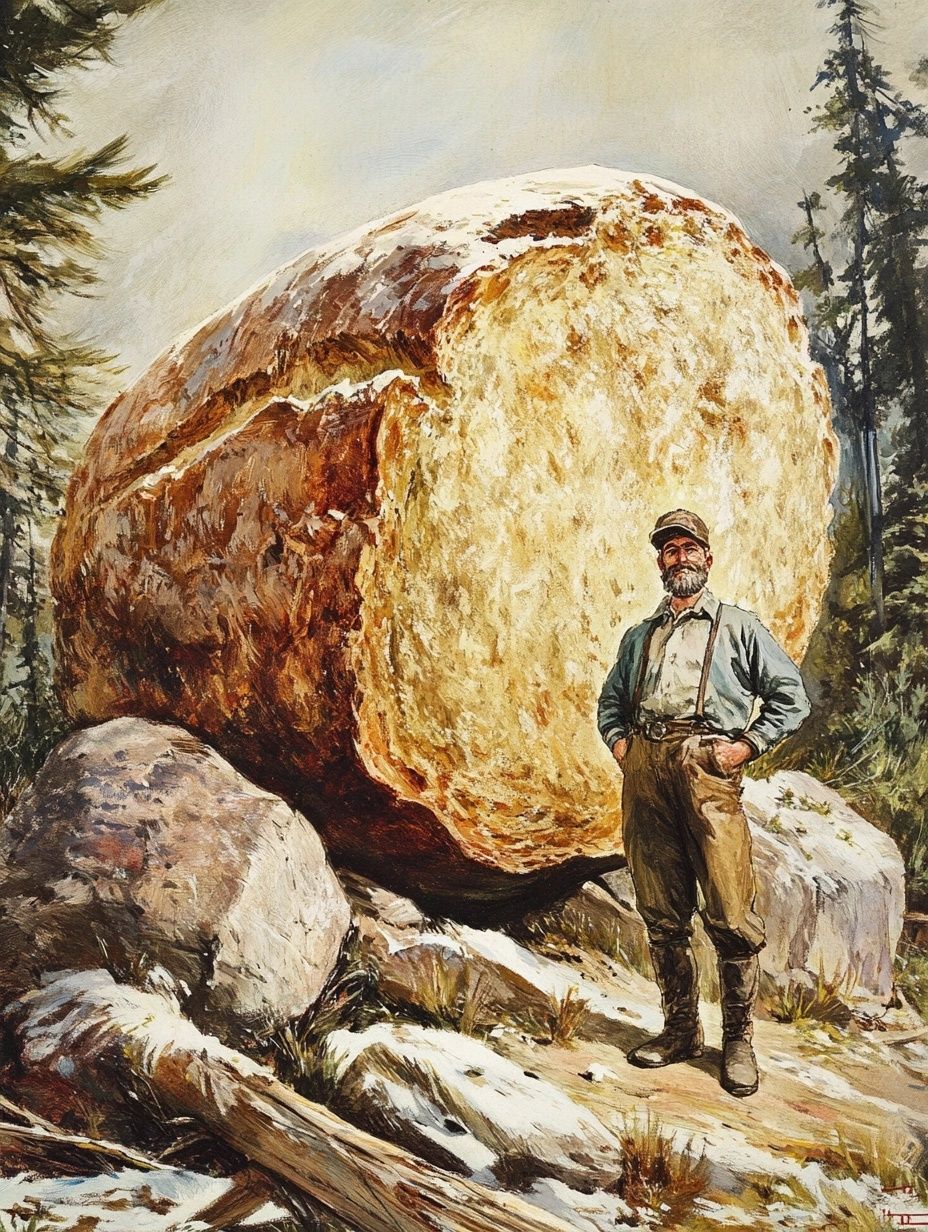
The legacy of Paul Bunyan is still widely evident in the US today, through statues (lots of statues), festivals and modern retellings of his stories all over the place, from campfires to schools.
These tall tales have hung around not only because of their sheer entertainment value but because they so perfectly capture the resilience, creativity and camaraderie of those who worked so hard to tame America's vast forests.
And that's the kind of thing we can all appreciate and admire today.
Article sources
- Vilas County news. (Eagle River, WI), Dec. 21 1921.
- Brown, Charles E. Paul Bunyan Tales. [N.P, 1922] Pdf.
Explore more folktales from North America
11 US ghost towns that are actually haunted
Maybe...if you like escaping the crowds, these towns are not only abandoned but largely unvisited by tourists. Check them out.


